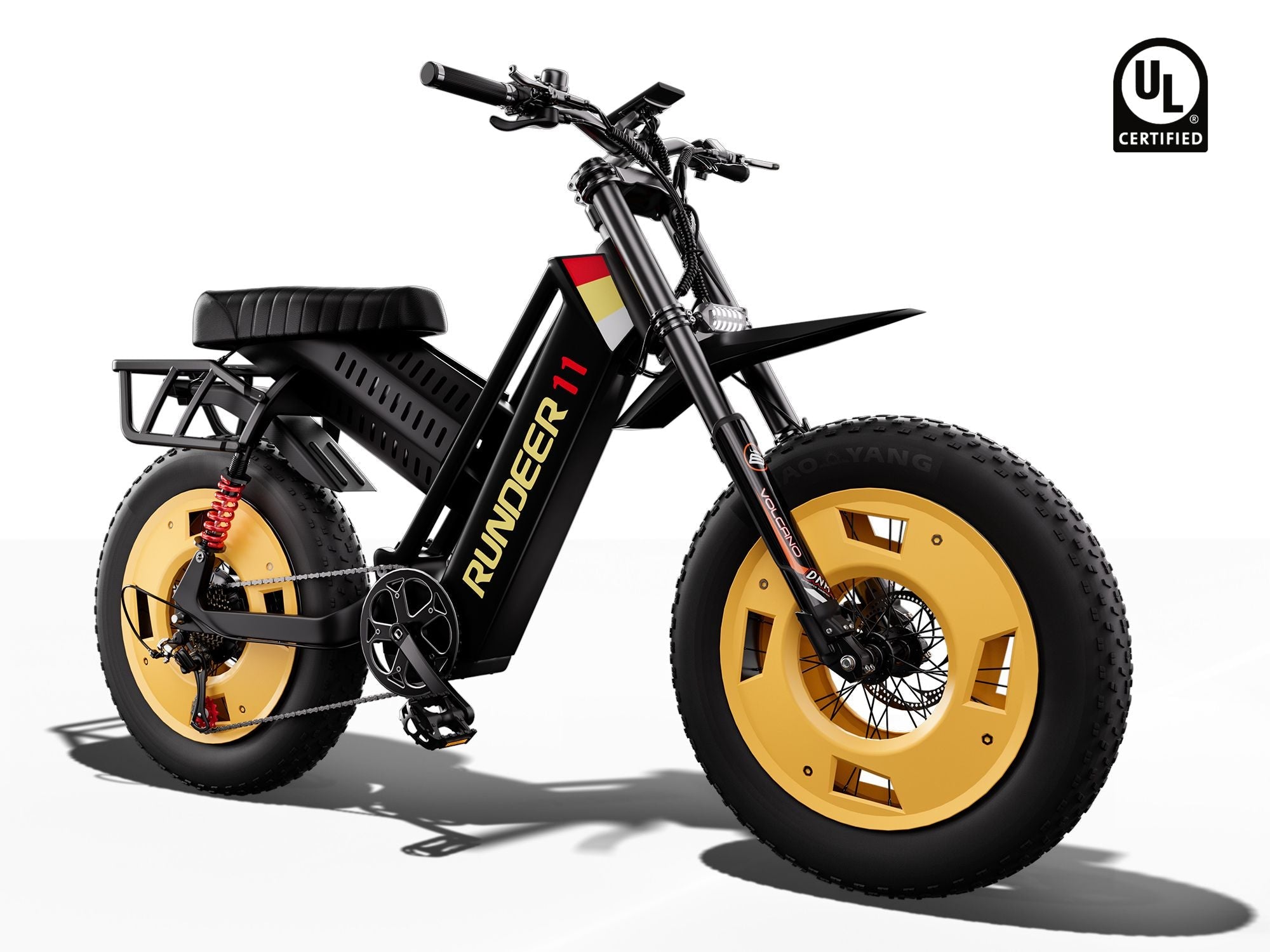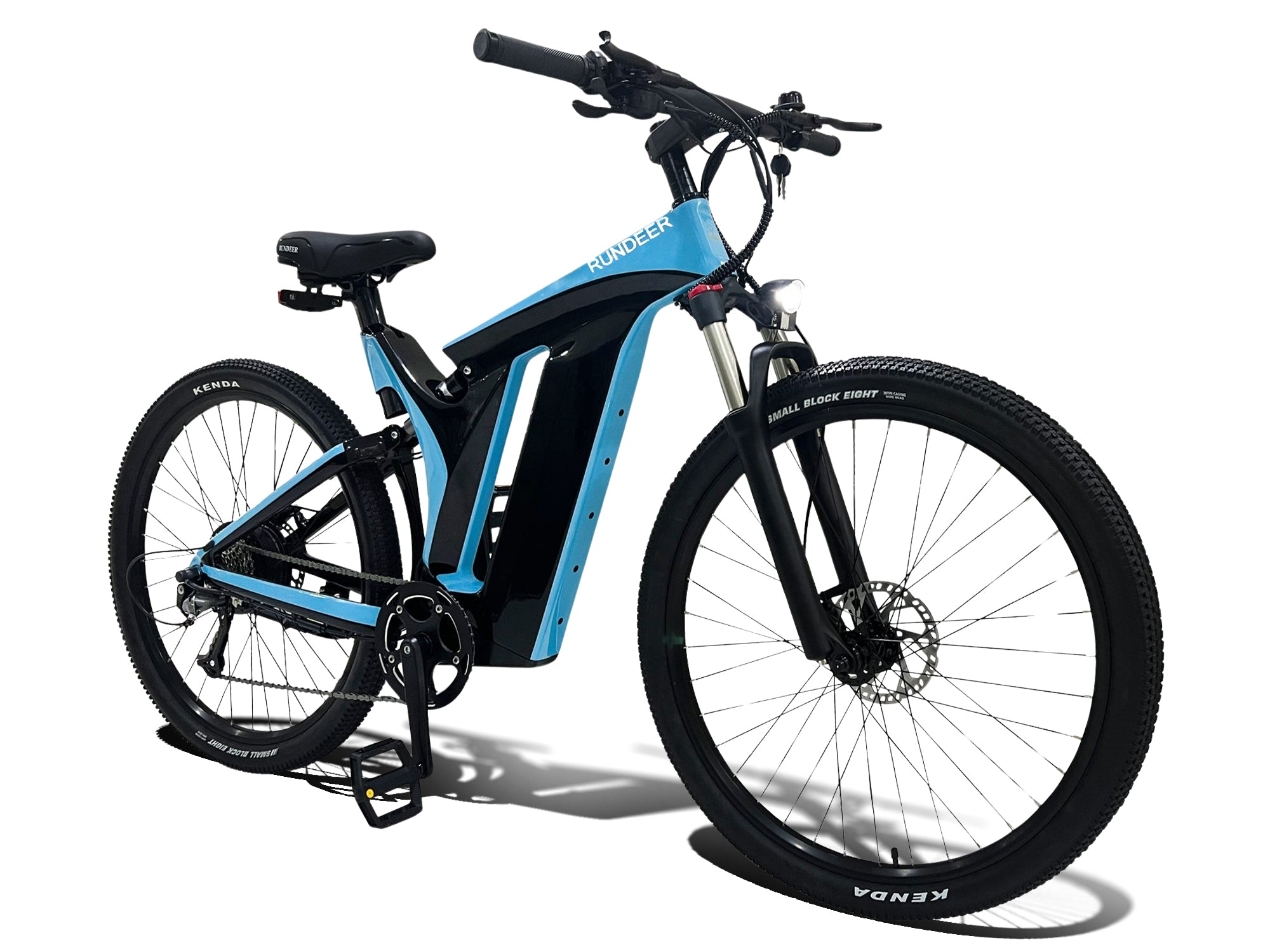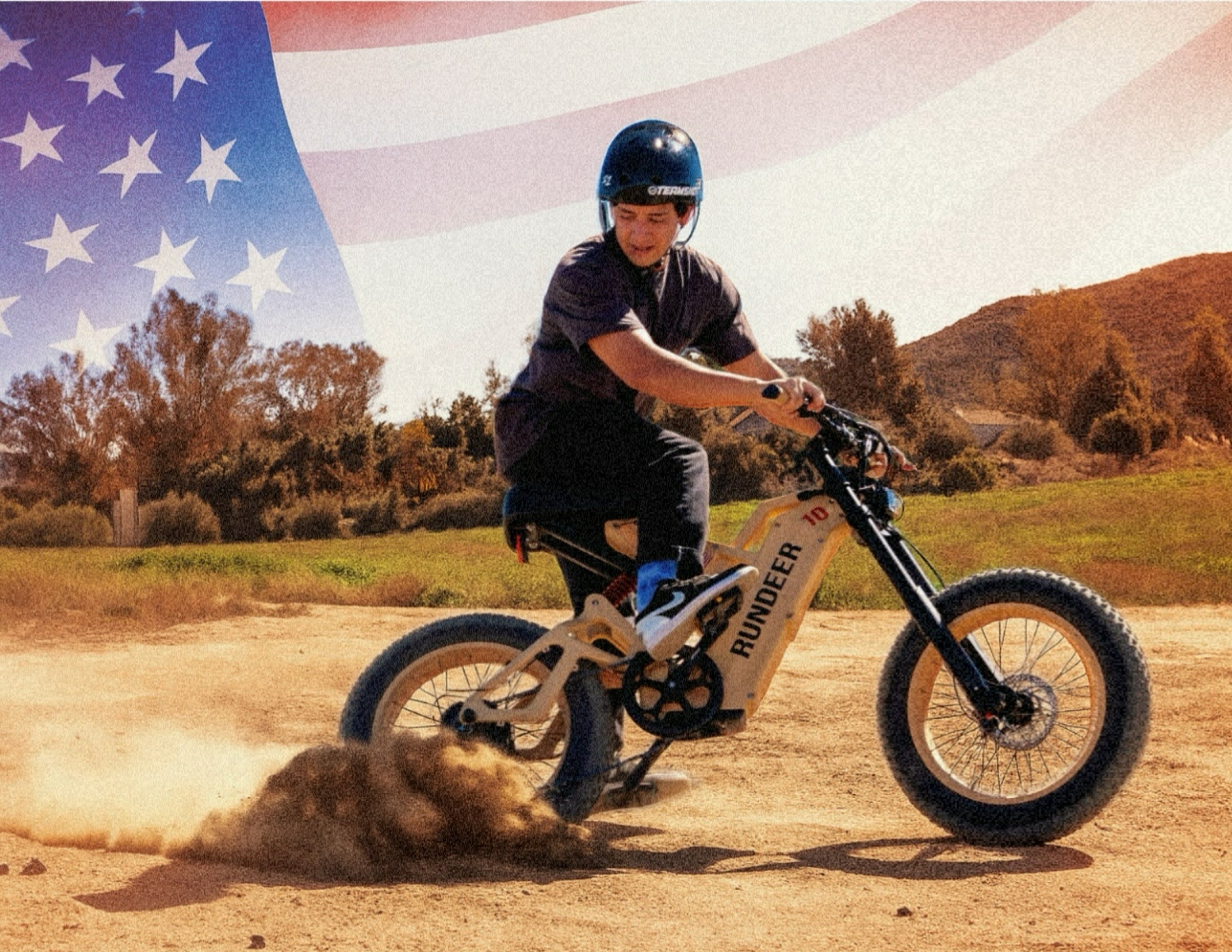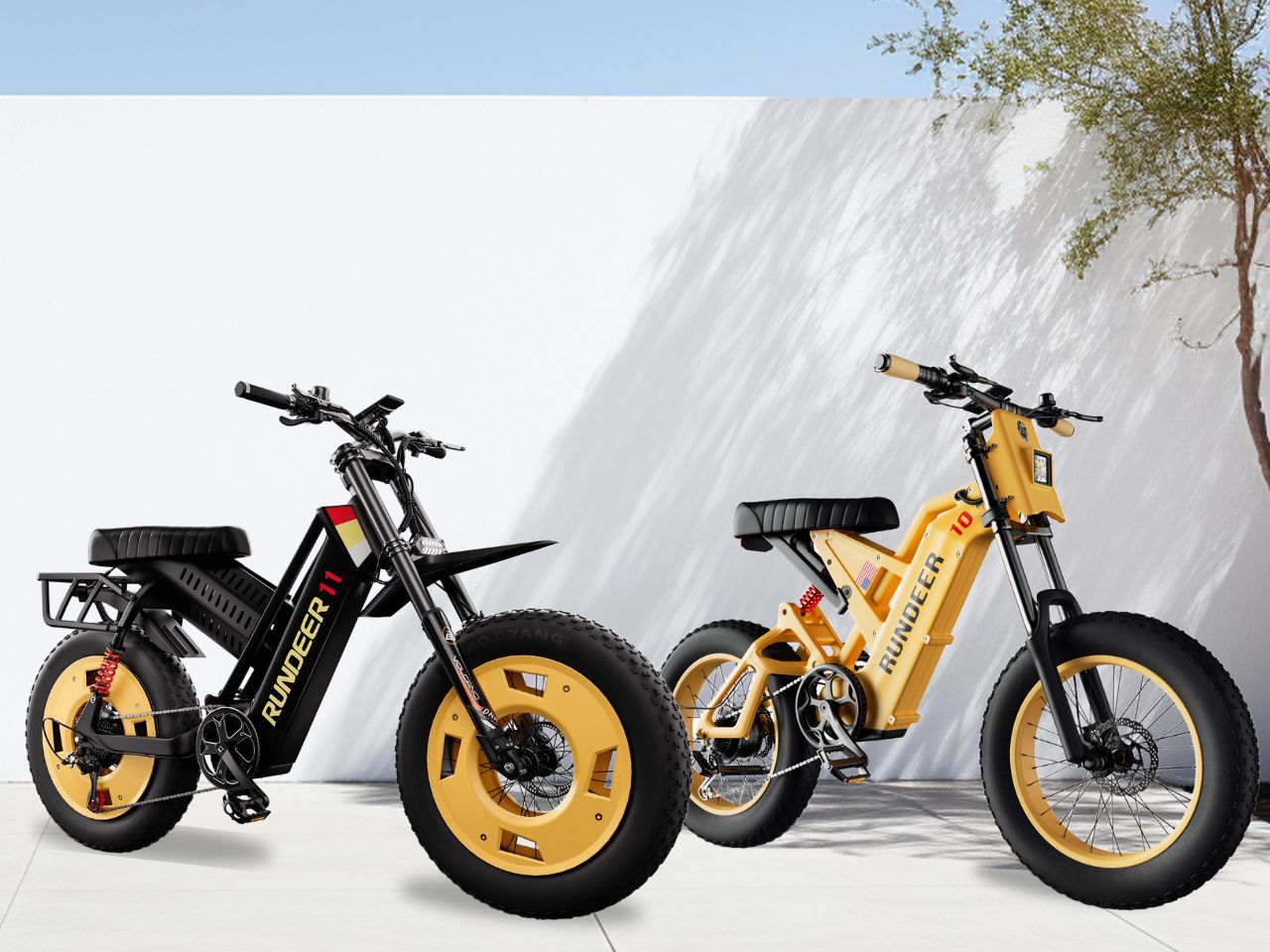Cyclists who want a smoother ride and the ability to handle different kinds of terrain are really into fat tire e-bikes these days. The big tires set these e-bikes apart, giving you more stability and a better grip on almost any surface. But like anything, fat tire e-bikes have both advantages and disadvantages. If you’re thinking of buying one, it’s worth weighing the pros and cons.
What Makes a Fat Tire E-Bike Special?
Fat bikes are easy to spot because of their extra-large tires, usually 3.8 inches wide or more. These big tires make a much bigger contact area with the ground compared to regular bike tires, which are usually around 1.5 to 2.5 inches wide.
The idea behind fat bikes is to get as much surface contact as possible and spread the rider's weight over a larger area. This changes how the bike handles on different terrains, especially on soft or uneven surfaces where normal tires might sink or slip.
Originally made for riding on snow and sand, fat bikes have become useful for all kinds of surfaces, from rocky mountain trails to muddy forest paths. The wide tires run at lower air pressures, usually between 5-15 PSI, unlike regular mountain bike tires that use 30-50 PSI. This lower pressure lets the tire adjust to bumps and holes, giving you better grip and a smoother ride.
The Benefits of Fat Tires
More Comfortable Ride
Fat tires act like shock absorbers, insulating you from bumps and jolts. The high volume of air in fat tires provides a cushion of air that smoothes out bumpy surfaces. Most riders report feeling less fatigued on long rides, especially on rough surfaces.
Good on All Kinds of Land
They're appropriate for where normal bicycles would not perform. Sand is a breeze instead of a chore, snow is a blast instead of a hassle, and muddy tracks can still be navigated. The super-wide tires won't sink in loose earth, so you can keep going where skinnier tires would get bogged down.
Very Stable and Secure
The wider contact area with the ground renders the bicycle extremely stable. This is especially handy for beginners or when riding on uneven terrain. This increased stability makes you feel more secure when riding over rough patches, loose gravel, or slippery surfaces. The bike is steady and firm, and you are less likely to slip or slide.
Less Flat Tires
Fat tires are usually made of lower air pressure and thicker rubber. What that means is that they are less likely to be punctured by thorns, glass, or jagged rocks. Being at lower pressure allows the tire to bend around obstacles instead of getting pierced.

The Downsides of Fat Tires
Heavier and Bulkier
Fat tire e-bikes are much heavier than regular bikes. The tires themselves can add 3-5 pounds compared to standard mountain bike tires, and the stronger wheels and frame needed to hold them also add weight. This extra weight makes the bike harder to handle, especially when you're not riding or when you're putting it on a car rack.
Harder to Pedal on Pavement
The large surface area that gives great grip on soft surfaces becomes a problem on hard roads. More rubber touching the ground creates more friction, so you have to work harder to keep your speed up. This makes fat tire bikes less efficient for commuting or riding long distances on roads.
Slower and Less Efficient
The extra weight and rolling resistance make the bike slower overall. You'll probably notice that it takes longer to speed up and your top speed is lower compared to bikes with regular tires. This is especially noticeable when you're going uphill or trying to go fast on smooth roads.
Less Agile and Responsive
The wide tires and heavier wheels make the bike feel less quick and responsive. Changing direction quickly takes more effort, and the bike can feel slow compared to lighter bikes. This is particularly a problem when you're riding on technical trails where you need to be able to maneuver quickly.

Fat Tire E-Bikes compared to other bikes
In contrast to mountain bicycles, fat tire e-bicycles sacrifice a bit of speed and efficiency for stability and the capability of riding on numerous various terrains. Mountain bikes with standard tires are ideal for climbing hills, power acceleration, and technical tracks. Nevertheless, they are horrible on soft ground where the fat bikes excel.
Road bikes are the reverse, optimized for top speed and efficiency on pavement but utterly useless on soft or rough surfaces. That illustrates that fat bikes represent a special compromise, sacrificing some performance to achieve greater versatility.
Hybrid bikes are a third alternative, which provides decent performance on multiple surfaces without the specialization of fat bikes. Though hybrids are adequate on pavement and smooth trails, they do not match fat tire bike performance on soft surfaces.
How Comfortable Are Fat Tire E-Bikes?
Fat tire e-bikes aren't just more comfortable because of the cushioning. The large amount of air in the tires creates a suspension effect that gets firmer as the tire compresses. This means they handle small bumps well while still supporting you on bigger impacts.
People often say their hands and wrists feel less tired because the tires reduce vibration through the handlebars. The natural cushioning of fat tires filters out many of the vibrations that can cause discomfort on long rides.
Don't forget the mental comfort. The extra stability and grip give you confidence, so you might try riding on terrain you'd avoid with a regular bike. This can lead to more adventurous rides and a more enjoyable cycling experience.
Staying Stable on Rough Terrain
Fat tire bikes demonstrate exceptional stability characteristics on challenging surfaces. The wide contact patch distributes weight more evenly, reducing ground pressure and minimizing the risk of sinking into soft surfaces. This weight distribution also improves traction on loose surfaces like gravel or sand.
The stability benefits become most apparent when riding over obstacles like roots, rocks, or ruts. The tire's ability to conform to irregular surfaces maintains contact and traction where narrower tires might lose grip. This characteristic reduces the likelihood of unexpected slides or loss of control.
Cornering stability receives a significant boost from the increased contact area. Riders can maintain speed through turns with greater confidence, knowing the large footprint provides substantial grip reserves. This stability advantage particularly benefits riders who may lack the technical skills to navigate challenging terrain on more demanding bike types.
Maintaining Fat Tire E-Bikes and How Long They Last
Fat tire e-bikes need some specific maintenance because of their design. The bigger tires need more frequent pressure checks since even small leaks are more noticeable because they operate at lower pressures. But the good news is that the thicker tires are usually very durable and resist punctures and wear well. With proper care, you can expect a good set of fat tires to last for several seasons of regular riding.
Wheel maintenance can be more complex because the wheels are heavier and use specialized parts. You'll need to pay more attention to spoke tension and wheel alignment since the extra weight and wider rims create different stress patterns compared to regular wheels.
The drivetrain components can also experience more stress due to the higher rolling resistance and overall weight of the bike. Chains, cassettes, and derailleurs might need servicing or replacement more often. However, the motor assistance in e-bikes helps reduce some of this stress. As for the bike itself, a well-maintained fat tire e-bike can easily last for many years. The lifespan depends on factors like how often you ride it, the conditions you ride in, and how well you keep up with maintenance. But with regular servicing and care, you can expect a fat tire e-bike to provide reliable performance for a long time.
Thinking About the Costs of Fat Tire E-Bikes
Fat tire e-bikes usually cost more because of their specialized parts and how they're built. The initial price can be several hundred dollars higher than standard e-bikes. This difference comes from the cost of wider rims, special tires, and a stronger frame.
Over the long run, you'll also pay more to replace the tires since fat tires cost more than standard ones. The extra weight can also cause components to wear out faster, which could mean higher maintenance costs.
However, fat tire bikes are versatile, which can save you money in the long run. A single fat tire e-bike can handle many different types of riding, so you might not need separate mountain, commuter, or recreational bikes.
Discover the Freedom of Fat Tire E-Bikes!
Fat tire e-bikes are a great choice if you value comfort, stability, and being able to ride on various terrains more than just speed and efficiency. These bikes are perfect for casual riding, beach trips,winter biking, and exploring different landscapes. The added stability and confidence they give make them ideal for beginners or anyone getting back into cycling after a long time.








